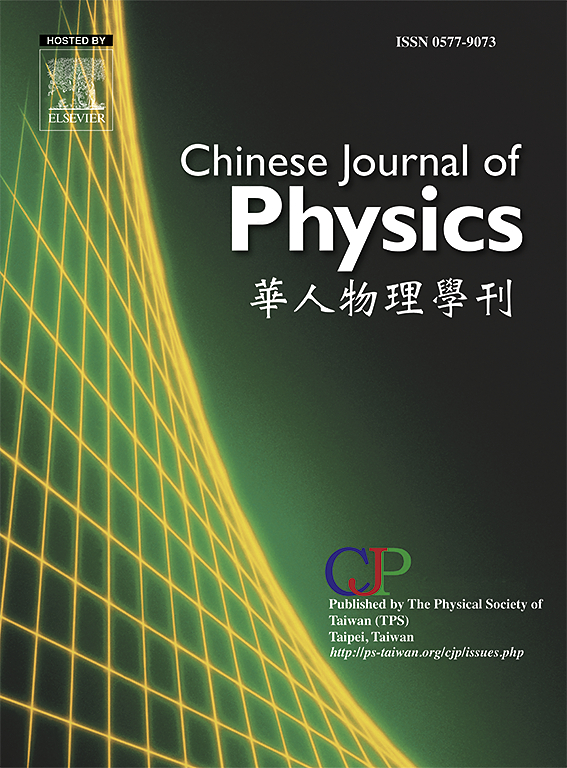The role of interface traps to affect monolayer MoS2 phototransistor
IF 4.6
2区 物理与天体物理
Q1 PHYSICS, MULTIDISCIPLINARY
引用次数: 0
Abstract
With high quantum efficiency, layer-dependent bandgap, and minimal dark current, molybdenum disulfide (MoS2) phototransistors show promise in scientific research and practical applications. The atomic layer thickness of monolayer MoS2 on silicon dioxide (SiO2) significantly influences properties such as mobility and carrier concentration due to interfacial traps. These traps lead to an increase in dark current, thus reducing photo-detectivity and sensitivity in MoS2-based photodetectors. In this study, we explore a MoS2-based field-effect phototransistor with interfacial trap effects at the MoS2/SiO2 and Si/SiO2 interfaces. Varying source-drain voltage, gate voltage, and illumination power, we examine the impact of interface traps. Our results reveal the emergence of an optically induced field (OIF) during illumination, originating from the interaction between photon-generated electrons and interfacial traps. OIF significantly influences both strength and direction of photocurrent. These findings provide a novel approach to studying interface traps in ultrathin material phototransistors, contributing to advancements in this field.

求助全文
约1分钟内获得全文
求助全文
来源期刊

Chinese Journal of Physics
物理-物理:综合
CiteScore
8.50
自引率
10.00%
发文量
361
审稿时长
44 days
期刊介绍:
The Chinese Journal of Physics publishes important advances in various branches in physics, including statistical and biophysical physics, condensed matter physics, atomic/molecular physics, optics, particle physics and nuclear physics.
The editors welcome manuscripts on:
-General Physics: Statistical and Quantum Mechanics, etc.-
Gravitation and Astrophysics-
Elementary Particles and Fields-
Nuclear Physics-
Atomic, Molecular, and Optical Physics-
Quantum Information and Quantum Computation-
Fluid Dynamics, Nonlinear Dynamics, Chaos, and Complex Networks-
Plasma and Beam Physics-
Condensed Matter: Structure, etc.-
Condensed Matter: Electronic Properties, etc.-
Polymer, Soft Matter, Biological, and Interdisciplinary Physics.
CJP publishes regular research papers, feature articles and review papers.
 求助内容:
求助内容: 应助结果提醒方式:
应助结果提醒方式:


